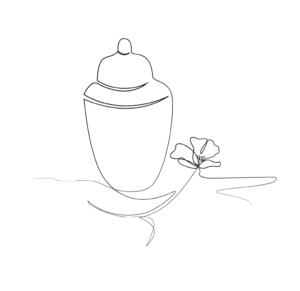Choosing a direct cremation offers a simple, dignified, and affordable way to say goodbye. It removes the pressure of arranging a traditional funeral, allowing families to focus on supporting one another. But once the cremation has taken place, what happens next?
One of the greatest benefits of direct cremation is the flexibility it provides. With the practical arrangements handled professionally, you and your family have the time and space to decide how you wish to remember your loved one in a way that feels personal and meaningful. This guide explains the steps that follow a direct cremation and the choices available to you.
The return of the ashes
After the direct cremation is complete, the ashes are carefully and respectfully collected and placed into a simple, suitable container provided by the funeral director. The next step is their return to you.
A quality provider will coordinate the return of the ashes directly to your family. This is often done via a secure courier service or by hand-delivery, ensuring they arrive safely at a nominated address. This process is handled with the utmost care and may be included in the service, so there are no unexpected costs. Once returned, you can take your time to decide on their final resting place.
Another option may be to collect the ashes from the crematorium yourself or arrange to have them scattered at the crematorium. You could even consider a memorial there such as interring the ashes or planting a rosebush. Just because you did not have a service does not mean you can’t use the gardens of remembrance for months and years to come.
Meaningful options for the ashes
- Keeping them at home: Many people find comfort in keeping the ashes close, perhaps in a decorative urn or a special container placed in a favourite room.
- Scattering them in a special place: You might choose to scatter the ashes in a location that held special meaning, such as a favourite park, a peaceful woodland, or at sea. Check for any local regulations or permissions required.
- Burying the ashes: Ashes can be interred in a family grave, a churchyard, or a natural burial ground. Some cemeteries have specific memorial gardens for this purpose.
- Creating a living memorial: Some families choose to plant a tree with the ashes, creating a living tribute that will grow for years to come.
- Crafting memorial keepsakes: The ashes can be incorporated into items like glass paperweights, jewellery, or artwork, providing a lasting memory.
Planning a memorial service or celebration of life
Direct cremation separates the cremation itself from the memorial service. This gives you the flexibility to plan a celebration at a time and place that works for everyone, without the pressure of a tight schedule.
This event can be anything you want it to be. It could be a small, informal gathering at home, a larger event at a favourite restaurant or venue, or a simple get-together in a natural setting. You can share stories, play favourite music, and celebrate a life in a way that feels authentic and heartfelt. This approach allows family and friends who live far apart to travel and participate without the rush associated with a traditional funeral service.
Handling the legal and administrative steps
A reputable direct cremation provider will support with all arrangements and legal and administrative paperwork related to the cremation itself. In Scotland there are additional papers that need to be completed by the deceased’s family, according to Scottish law, so this should be considered.
Your provider should give you clear guidance on registering the death and obtaining the official death certificates, which you will need for tasks like closing bank accounts or handling an estate. Their support ensures the entire process is handled smoothly and professionally from start to finish.
Making the right choice for your family
What happens after a direct cremation is entirely up to you. The process is designed to give you control, flexibility, and the space to grieve in your own way. By removing the formalities and high costs of a traditional funeral, it allows you to focus on creating a personal and meaningful tribute that honours the memory of your loved one.
This freedom is one of the most significant reasons why more families are choosing this simple, dignified, and modern approach to farewells.




